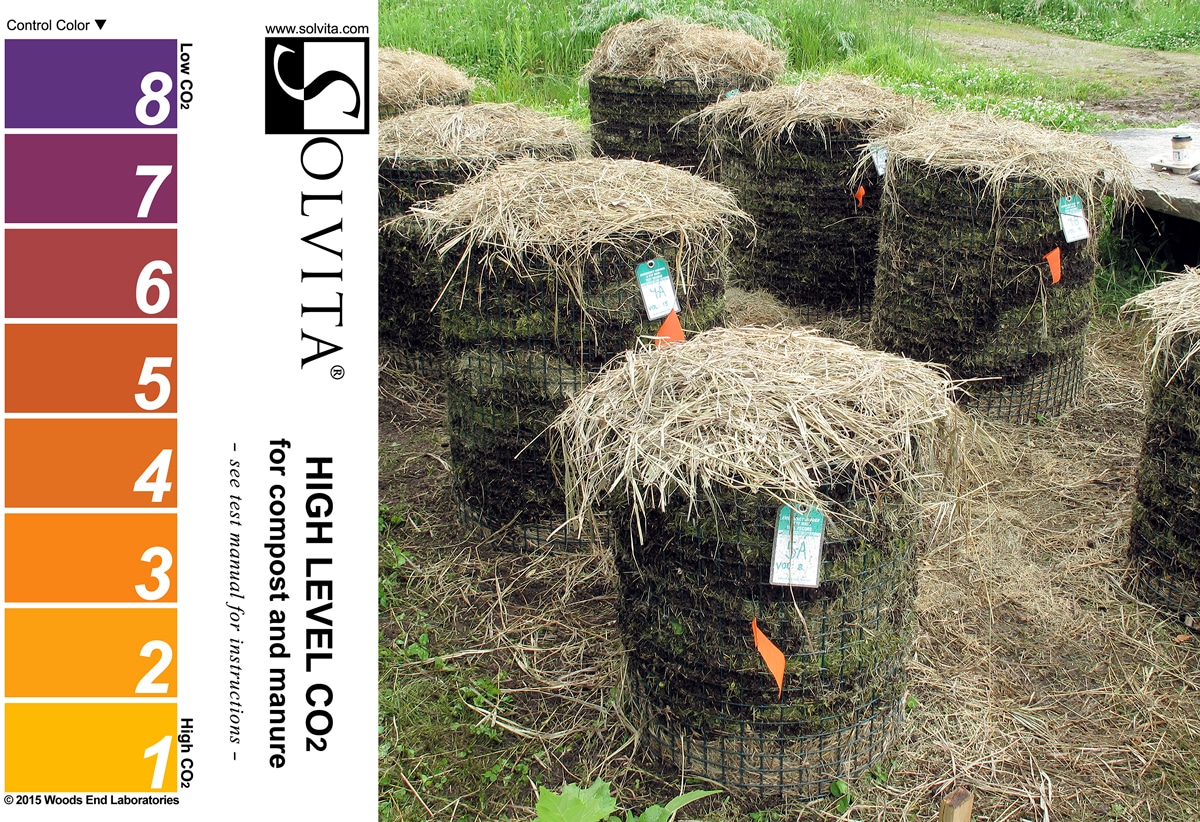Recent tests comparing Solvita’s compost maturity test with infrared spectroscopy have revealed that the Solvita “Hi-CO2” gel corresponds quantitatively to a wide range of CO2 levels typical of active composts.
Solvita for compost was designed empirically to indicate CO2 in a range practical to composting. The recent study selected a range of composts from across the USA and compared the Solvita test both visually and read by Solvita DCR with results of an independent IRGA (infrared gas analyzer) system.
The high correlation (see figure) essentially confirms that the Solvita gels possess the original design capacity to detect “raw” (very active) to “mature” (stable) composts. For example, the color change from #8 (“mature”) to #1 (“raw, active”) corresponded by IRGA to a range of 0.09% to 20% CO2 with an r2 of 99.5% (a scientific calculation indicating absence of error). The linearity displayed on an exponential scale confirms adherence to a colorimetry law called Beer-Lambert which defines attenuation of light in proportion to molecular concentration following the log function.
The Solvita compost test was created in the early 1990’s to make compost quality measurable at a time when composting was increasing popular and quality standards were needed to help decide when compost was ready for use. Solvita aided decisions such as the need for aeration, or to protect consumers from immature products that might cause plant damage. (Ammonia was later added to Solvita since CO2-mature composts could still be odorous and harm plants by off-gassing unstable nitrogen.)
IRGA – or infrared gas analysis – is often represented as the gold-standard for CO2 detection, a technology that comes at a price. Aside from the cost, IRGA cells cannot be readily taken outdoors, if at all, are prone to water vapor interference, are affected by atmospheric pressure, sensitive to EMF radiation and poisoned by sulfur gases (which immature composts may emit). Solvita is insensitive to all these factors.
The results of the study support a conclusion that the Solvita gels are reliable chemistry and a strong contender for CO2 detection at low-cost within practical limits of accuracy gauging compost quality across a wide range of conditions.

